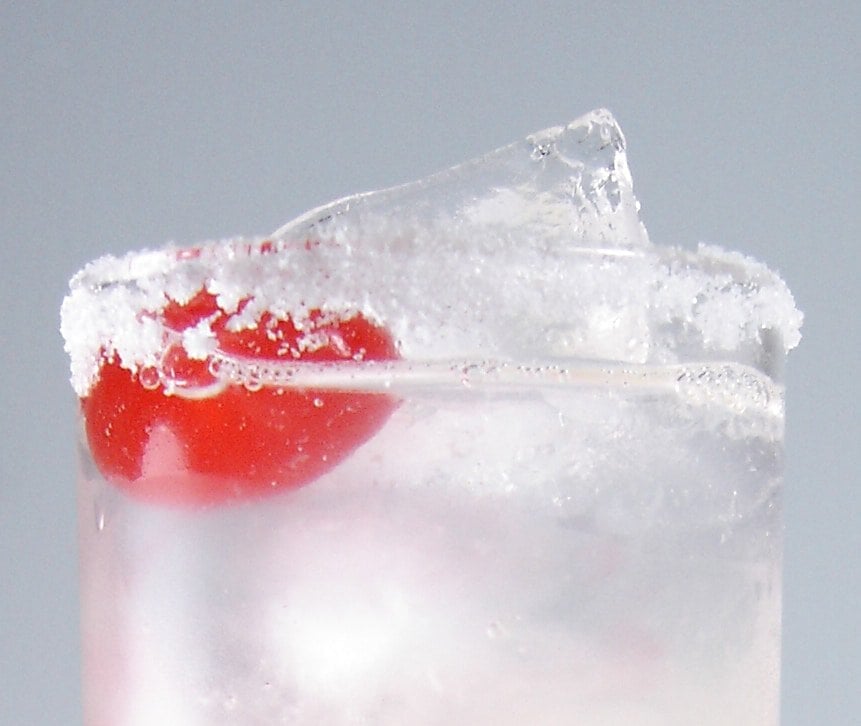In life there are few things we automatically like or love, we usually need a positive introduction by a trusted person to acquire a taste. This process is called “Transvaluation” and is the technical term for positive contamination. Transvaluation is rare compared to negative contamination because it requires an object or person, of significant influence, to imbue another item with their “glow”. A single fly can ruin a pot of soup, but the greatest chef is powerless to fix it. Negative contamination is always more influential than positive contamination, divine intervention being the rare exception.
Transvaluation is part of the illogical thought processes that make up magical thinking. Many times it is a subconscious process, but it can be a deliberate cognitive process. Other times “divine intervention” can transvaluate something boring into something exciting. The ultimate example is the Christian belief that Jesus turned water into wine. That’s an extreme example, but it represents the idea and influence a person can wield over food and beverages. Now let’s look at how you can turn a boring cocktail into a good one.
In the culinary world, three star chefs have the ability to turn basic food items into meals of significant admiration. The idea that an elite chef, by the mere act of creating a recipe, has incorporated their essence into a dish and elevated it beyond basic sustenance is impressive. People will pay significant sums and travel great distances to enjoy these culinary creations.
People may also forgo some of their neophobic tenancies when in the presence of a great chef. Many of the ingredients used by influential chefs are gathered from different cultures and locations around the world. They serve foods, in unique forms, that look unfamiliar and challenge our senses. In ordinary circumstances, this can bring a neophobe to their knee’s, but in the presence of a respected master, we may forgo our natural instincts and let logic briefly take hold.
In certain cases of direct negative contamination, like food has been licked by some grubby assailant, most people would reject that food. But, if the person was found to be a very attractive super model, the contamination would magically transvaluate into an object of desire for some. The illogical aspect is that attractive people aren’t necessarily more disease free than grubby people.
Another example is your mother’s cooking compared to others. Even if your mom and another person cooked the exact same recipe, people will still select the food prepared by their mom, even if it is a blind selection where your mother would never know which plate you selected, avoiding the consequences of hurt feelings.
Positive contamination is a powerful tool that is used widely in the world of marketing. That’s why actors, rockstars an other people of influence have their faces plastered all over products ads. It’s not that George Clooney can actually make a cup of espresso better by marketing it, people just believe it to be so.
Practical Applications
Taking psychology research on human emotions and giving it an application in the world of food and drink can seem like a stretch. The reality is that most research has a practical basis, and translation is the only step required to harness the knowledge. Having an understanding of how people feel, especially at the subconscious level, can help make food and drink a much better experience.
One way to positively contaminate your work, be it drinks, food or written words, is to incorporate the works of others into your efforts. Don’t go around stealing things, there are better methods, like the following.
Let’s say you are a new bartender who has been asked to revamp a cocktail list and make it popular. You can try to make up a dozen drinks no one has ever heard of before, or you can take some known cocktails and put them on your menu. Cosmopolitan anyone? Thank Sex in the City for transvaluating that cocktail.
If you are a writer you know plagiarism is frowned upon, but you can still use quotes. The best quotes are those of well-known personalities, talking about your book for example. This is where the Law of Similarity takes hold, and what’s really happening on the psychological level is that if a well know author gives a great review of a book, then a potential buyer makes a connection between the two and “;the quote becomes equal to the object” i.e. if the quoted author enjoyed the book, then the book must be good. If some unknown guy wrote the quote, a person wouldn’t make the connection.
For my book Fix the Pumps, I’ve luckily had great feed back about it and here are some of the quotes I’ve received:
“No bartender can call himself a serious craftsperson if they have not read this book, and no consumer will swallow a Coke quite so carelessly after reading it.” Philip Duff
“Atop the rediscovery category–the domain of scholarly work–rest a tidy handful of books that can be termed revelatory. David Wondrich’s Imbibe! is a particularly prominent example, to which I would add–in no particular order–Jeff Berry’s Sippin’ Safari, Gary Regan’s Joy of Mixology, Lowell Edmund’s Martini, Straight Up, Wayne Curtis’ …and a Bottle of Rum, Dale DeGroff’s Craft of the Cocktail, and Ted Haigh’s Vintage Spirits and Forgotten Cocktails. I’m sure I’m unintentionally omitting some peers, but I’m equally sure these are as essential reading as exists. To this list we can now add Darcy O’Neil’s Fix the Pumps.” Martin Doudoroff
“Darcy shows his knowledge and passion for the history and authenticity of the carbonated beverages in this book. A high recommendation.” Kyle Miller
Do you feel like buying a copy of Fix the Pumps now?
Another example is vodka. For a spirit that has such a narrow taste range it would have been impossible to gain such a significant chunk of the spirits market without harnessing magical thinking. Obviously, positive contamination plays a big role. Whether it’s the idea that the vodka was made with fine French wheat and spring water filtered through limestone or some TV star is promoting it the reality is that it is still vodka. But the illogical aspects of human nature show that people are willing to pay a significant price to feel connected with the people they admire.
And now we get to Paris Hilton. Does she really make a bar better by just showing up at the grand opening? Not really. Will she contaminate the environment? I’m sure a few guys will get contaminated those nights, but that’s not what we’re talking about. The reality is that Paris adds very little, other than creating buzz. But again, people will do odd things to feel connected to an idol, even months after she’s forgotten about the bar that paid her six figures to show up. The vibe lingers.
So how can you use Transvaluation to your benefit? Well, here are a couple of suggestions, but remember that the idea requires that you incorporate others into your being. Here are some more examples:
Presentations: If you are just starting out do presentations, like at Tales of the Cocktail, invite well-known industry professionals to sit on your panel. I stacked my panel the first year with Audrey Saunders, Robert Hess, Eben Freeman and Jamie Boudreau.
Guest Bartending Gigs: Bringing in well know bartenders and professionals from around the world can have a very positive effect on a bar. Having Gaz Regan or Jeff “Beachbum” Berry make drinks at your bar, for a single night, can put your bar on the map and create a substantial amount of buzz.
Cocktail menus with popular cocktails by other bartenders. If having the actual person make drinks is out of your budget, think about putting some of their cocktails on your menu, including a reference and story about the drink. Wet Grave anyone?
These are just a few examples, but Transvaluation is a powerful tool for anyone who wants to progressively improve their status.




